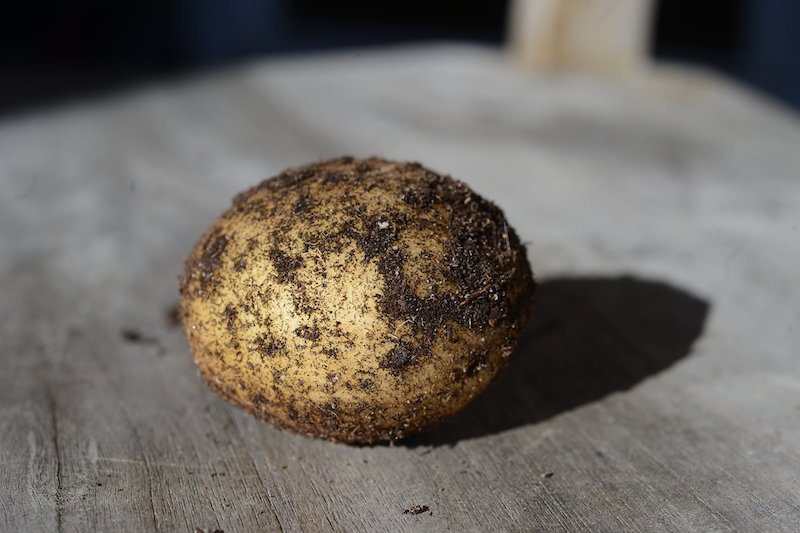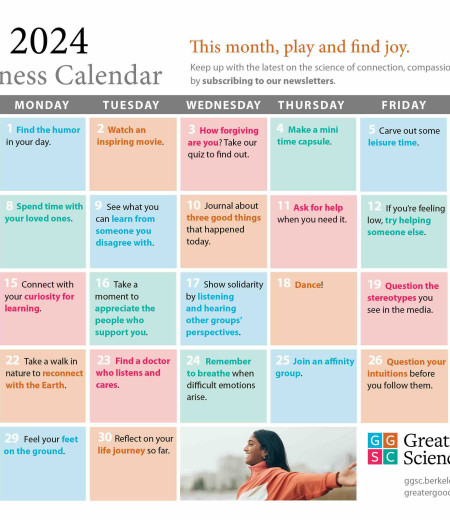The coronavirus snuck up on us, bringing our way of life to a sudden halt. Here we are now, sheltering at home, shocked by the rising death count, worrying about ourselves and those we love. What used to be a cough to clear our throat now leads to hallucinations of being on a respirator. We may be sheltered in our homes, but we are not sheltered from our anxiety.
 The pictures accompanying this piece are by Oakland, CA, photographer Auey Santos. "My pandemic photo diary started as a way to express myself though images, since I failed to find the words to express my disbelief about what was happening around me," she writes. "Photographically, the self-assigned challenge was to shoot with one camera, and one lens and no post-processing. But what I’m learning is to shift my perspective, pause and look at my surroundings with open eyes, an open mind, and an open heart."
The pictures accompanying this piece are by Oakland, CA, photographer Auey Santos. "My pandemic photo diary started as a way to express myself though images, since I failed to find the words to express my disbelief about what was happening around me," she writes. "Photographically, the self-assigned challenge was to shoot with one camera, and one lens and no post-processing. But what I’m learning is to shift my perspective, pause and look at my surroundings with open eyes, an open mind, and an open heart."
Many studies have found that cultivating mindfulness through meditation can help alleviate anxiety. But even in the midst of shelter in place, many people believe that they don’t have the time for consistent meditation practice.
In 2019, while teaching a mindfulness course, we noticed that people who spent just 10 minutes a day meditating benefited more from the course than people who said they didn’t have time to meditate at all. In response to this quandary, we searched for a solution—and found one we call Microdosing Mindfulness. Discovering awe in the ordinary is key to the practice.
The predominant focus of research on awe has been on extraordinary experiences—for example, looking over the rim of the Grand Canyon or listening to a perfectly performed Beethoven symphony. These studies were valuable in creating a foundational understanding of the benefits of awe, including enhanced physical health, improved quality of relationships, increased desire to help others, and feelings of connectedness.
But what about finding awe in your own home?
This is an especially pressing question for people in quarantine, who are denied access to public parks and concerts. As mindfulness teachers and healthcare professionals, we were deeply curious to know whether teaching patients how to discover awe in the everyday ordinary could have benefits similar to discovering awe in the extraordinary. Studying the effectiveness of Microdosing Mindfulness seemed especially important because the practice is self-sustaining and teaches participants to experience awe at any time and any place. We hypothesized that accessing awe in the ordinary was effortless and easy and would have the same health benefits as experiencing awe in the extraordinary. Here’s what we discovered.
 “April 2: It’s business as usual for Commander Cody. Everyday has become ‘bring -your-human-to-work’ day.”
“April 2: It’s business as usual for Commander Cody. Everyday has become ‘bring -your-human-to-work’ day.”How to find AWE
In November 2019, we both conducted pilot studies on the efficacy of teaching this simple Microdosing Mindfulness practice for discovering awe in ordinary experiences. The method we tested uses the word “AWE” as an acronym.
A for “Attention.” When you choose to pay attention to things you appreciate, value, or find amazing, you focus your mind and heart on things that are likely to foster awe. We call this selective perception.
We all live in a world with an overabundance of stimulation. We can pay attention to only a few things at a time. Too often, we don’t choose what we pay attention to, and we operate on autopilot.
But you can choose. You can focus your attention. When you do, your mind quiets down. Whatever you’re doing—showering, eating, driving, gardening, writing, reading emails, playing with your kids, hiking—you can choose to bring your full attention to the present moment.
 “April 3: You say potay-toe, I say potah-toh.”
“April 3: You say potay-toe, I say potah-toh.”W for “Wait.” After you focus your attention, your mind quiets down. If you wait—at least the length of one full inhalation—you can begin to experience a state of coherence. As the poet W.B. Yeats wrote, “The world is full of magical things, patiently waiting for our senses to grow sharper.”
In our fast-paced world, we often resist doing things that take time because we feel we have too much to do. One of the reasons we believe Microdosing Mindfulness is so valuable is that it takes hardly any time at all. Simply focus your attention on something you appreciate, value, or find amazing, then pause long enough for one full breath, and then…
 “April 1: The postal system comes through! A delivery of yeast, from Mark Weiss, comes along with a note of friendship.”
“April 1: The postal system comes through! A delivery of yeast, from Mark Weiss, comes along with a note of friendship.”E for “Exhale and Expand.” When you exhale, you relax, and when you expand, you amplify whatever sensations you are experiencing. By combining focused attention with a respiratory pattern in which your exhalation is longer than your inhalation—about 2:1—you are opening the gateway to awe.
Although you exhale thousands of times each day, not every exhale leads to experiences of awe. This is because your mind is too busy, your attention is scattered, and the default mode network is overly active—and you are not focusing your attention on things you appreciate, value, or find amazing.
By paying attention, you are quieting your mind. Then, when you exhale deeply, you are likely to experience states of awe—characterized by goosebumps, shivers, raised eyebrows, and wide eyes.
 “April 8: The perfect shade of chartreuse”
“April 8: The perfect shade of chartreuse”Deep exhalation activates the vagus nerve, which stimulates the parasympathetic nervous system—decreasing heart rate, lowering blood pressure, and releasing muscular tension. And during exhalation, the contraction of the diaphragm sends a message to the brain to release dopamine—enhancing your mood, creating a calming effect, and acting as a pain reliever.
It is the contrast between the two states that awakens awe. First, you create a quiet inner space—imagine the pitch-black night sky on the Fourth of July, before the fireworks. Then fireworks light up the sky. The contrast dramatizes the experience. If the same fireworks took place at noon, the effects would be diminished. So, you quiet your mind with focused attention, you wait, and then you experience your own inner light show. As this happens, your sense of self becomes less dominant, less central. Instead of feeling as though everything revolves around you, you find yourself part of something larger.
Here’s a firsthand account from one of our pilot study participants describing her experience of awe:
I use my peripheral vision to see beyond what is just in front of me. The trees become greener and the sky a deeper shade of blue. I expand my other senses as well. I listen more deeply. As I inhale, I can smell the trees, the air, the faint scent of coconut butter I use on my skin. I feel the breeze against my cheek and the sun shining on my face. It’s as though my senses are suddenly more awake, and I am capable of receiving more beauty, more light, and I find myself in a state of awe. And all this happens in the time it takes for me to be present and then exhale fully and appreciate this moment right now.
Our studies aimed to test this framework with small doses of mindfulness—for five to 25 seconds. In Jake Eagle’s study, he enrolled 25 of his coaching clients in a virtual meeting for an hour once a week for three sessions. He measured outcomes with an awe questionnaire and the Five Facet Mindfulness questionnaire. Twenty-three individuals completed the study. In narrative evaluations, the participants reported decreased stress and anxiety, more connection to others, and increased happiness.
Michael Amster’s study enrolled twelve of his chronic pain patients in a four-week program, initially meeting in person, and subsequently virtually once a week for an hour. His curriculum was similar to Jake Eagle’s study, teaching participants the Microdosing Mindfulness method and coaching the patients in using this tool to help self-manage chronic pain. Eleven patients completed the study. All outcomes measured (awe questionnaire, Pain Interference, the Beck Depression Index, and Beck Anxiety Index) showed statistically significant improvements. The patients subjectively reported decreased chronic pain, less acute pain flare-ups, decreased anxiety and depression, more connection to others, and greater happiness, gratitude, and generosity.
 “April 2: A lettuce sprout. Hope. And future food source.”
“April 2: A lettuce sprout. Hope. And future food source.”Our two studies demonstrated that when participants practiced a brief mindfulness tool to experience awe, they significantly altered their emotions. By accessing awe in microdoses of less than a minute, participants reduced their levels of anxiety and depression; improved their perception of chronic pain; experienced relaxation; increased connection with others; and experienced beauty, gratitude, and generosity.
The beneficial outcomes of our two studies, as well as the broader scientific literature supporting awe interventions, speaks to the importance and timeliness of practicing awe-focused mindfulness to help manage stress and anxiety and cultivate well-being during challenging times.
Where to look
So, how can you apply this method of accessing a feeling of awe while stuck at home during quarantine? Here are some suggestions.
1. Experience your home as a museum
Take a bit of time to wander around your home, as if you were in a museum, and stop long enough to appreciate some of the things you have in your home.
- Do you have a piece of art, a photograph that you can look at and appreciate?
- Do you have any sculptures, or light fixtures, mirrors, or lamps that have a story behind them? Or a blanket, pillow, rug, or vase?
- When something captivates your attention, stop, wait, and breathe in slowly while giving your full attention to whatever you’re looking at.
- Notice its qualities, characteristics, and details.
- Does it conjure any memories?
- Who gave it to you?
- What happened to them?
- How did you end up with this in your home?
As you appreciate what’s in your home, exhale slowly, expand and allow yourself to take in the moment.
 April 4: I start my day the same way, everyday. Brew coffee. Consume coffee. Go onto deck and check plants. Today, I grab my favorite mug in rotation, original pottery by my friend Becky Agin
April 4: I start my day the same way, everyday. Brew coffee. Consume coffee. Go onto deck and check plants. Today, I grab my favorite mug in rotation, original pottery by my friend Becky Agin2. Cook like a Zen monk
The most envied job at any Zen center is that of the Tenzo, the cook. They get to practice meditation in action for most of the day. You can be like the Tenzo today, by giving the preparation of a meal all your attention.
- Using your senses, notice the feel, the weight of each ingredient, utensil, drawer pull.
- Notice the cold coming toward you when you open the refrigerator door.
- Notice the heat from the stove.
- Notice all the things you never noticed before while cooking.
- Notice the aroma of each ingredient.
- Consciously notice putting one ingredient away and reaching for the next one.
- Notice each movement you make—the stirring, the lifting.
- Spoon your meal onto your plate as though it were a gift to yourself, which it is.
- Sit quietly and eat consciously.
At any point in the process, attend fully to what you are doing, waiting, pausing, inhaling fully, exhaling into awe.
 “April 3: Cracked (made banana bread).
“April 3: Cracked (made banana bread).
3. Shower with your whole mind
Showering is an ordinary activity we do almost every day. It’s a good place for creative thinking but also a great place for an AWEgasmic experience.
- Slip into the stream and notice the sensation of the water bouncing off and stimulating your arms, head, face, back, and neck.
- Turn around and around and stay with the sensation of water contacting your skin.
- Play with different temperatures, hot to warm to cold and back to warm again.
- Notice the sound of the water and the scents of soap and shampoo and the smooth soapy contact of your hands on your body.
When a sensation captivates your attention, inhale, wait . . . then exhale and allow your senses to expand.
 “April 4: Trying to see past the rain.”
“April 4: Trying to see past the rain.”Sharing moments of awe
You can respond to a crisis by closing down your senses, distracting yourself, or worrying about the future. Or, you can continuously search for what you appreciate, value, or find amazing, and experience the awe that is ever-present. You can do this if you are confined to your home. In the process, you can transform a perceived constraint into a daily awe practice—reducing your anxiety and nourishing your soul.
Another wonderful awe practice is to share your moments of awe and read other people’s moments of awe. We have created a webpage that allows you to do just this. The website holds 30 moments of awe, and as new ones are added, previous ones fade away, representing the temporary nature of all moments.
Discovering awe in the ordinary is accessible to you all the time, even when you might be confined to your home. All you need do is intentionally focus your attention, wait long enough to fill yourself with the moment, then exhale and expand into awe.
All photographs from the pandemic journal of Auey Santos.









Comments